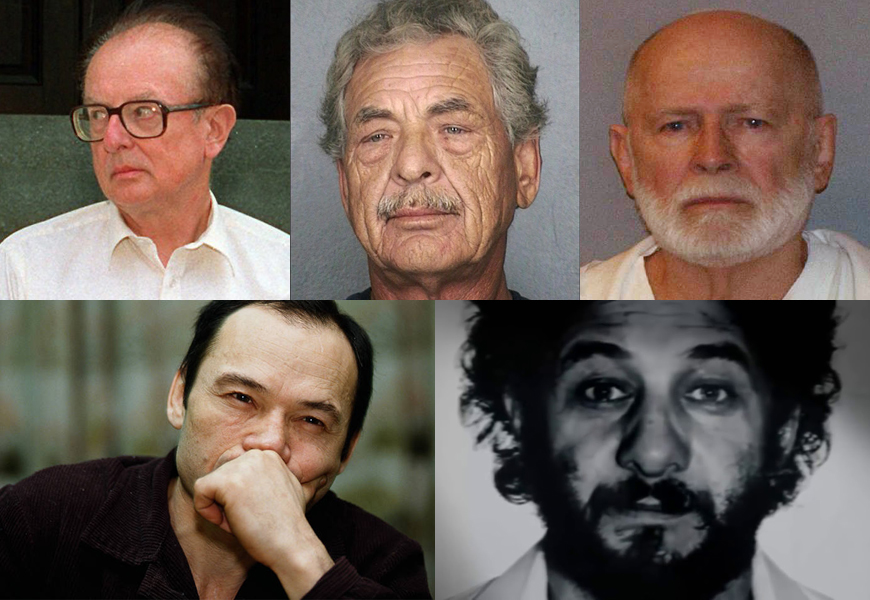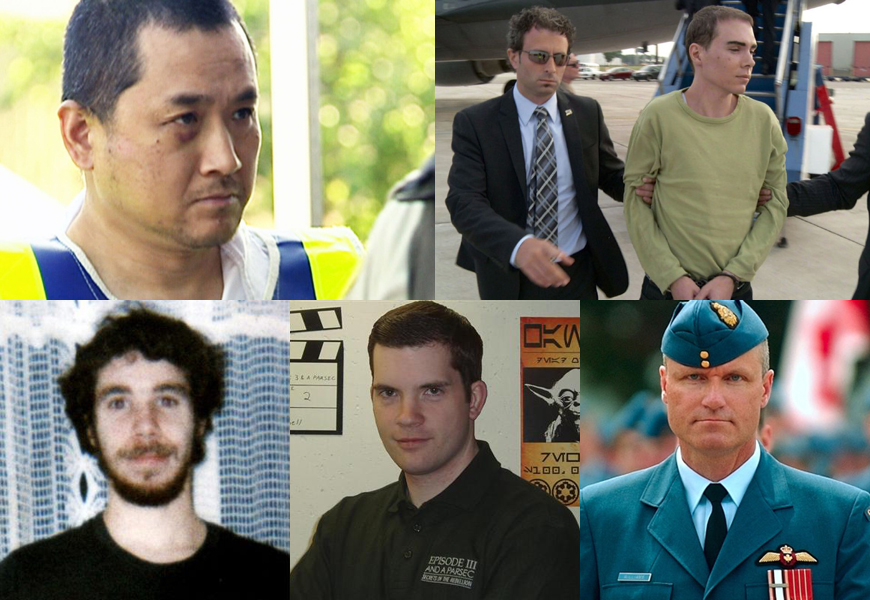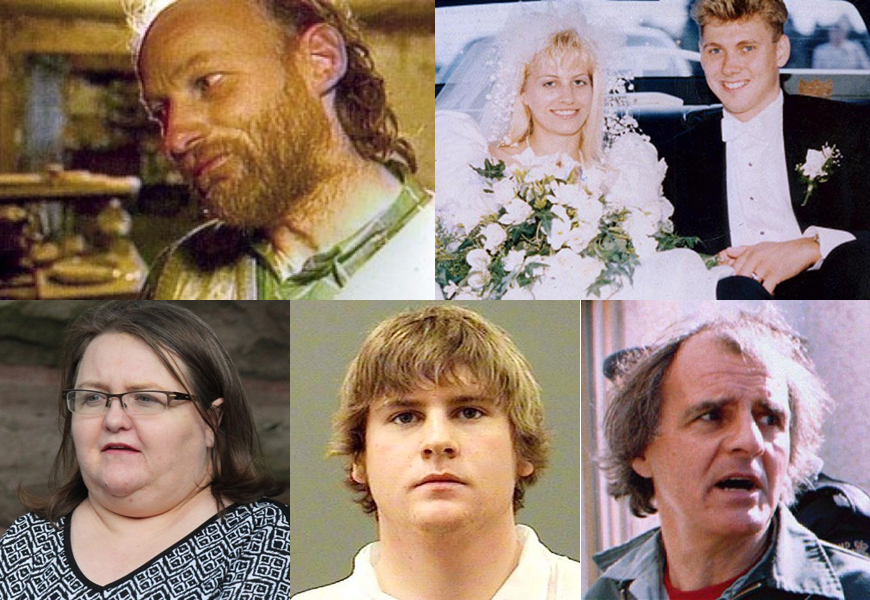Welcome to True Crime Tuesday where we review, recommend and generally obsess over everything crime-related.
We all know it’s possible for a person to disappear without a trace. People go missing every day, even when their face is all over the news and there are thousands of eyes looking for them. That being said, it isn’t exactly easy to disappear and start a new life without leaving a trail, especially when the police are watching your financial activity—which is what they’d be doing if you’d committed a crime, like say, murder, before you disappeared.
Still, some people manage to pull it off. They weren’t able to hide in plain sight for years like the alleged Golden State Killer, Joseph James DeAngelo because they were the one and only suspect. Instead, they left their entire lives behind—including the consequences of their crimes. These five killers successfully evaded capture for months or years before they were finally brought to justice.
John List
John List was 46 when he methodically murdered his entire family including his wife Helen, three children Patricia, John, and Frederick, and his mother Alma. He first shot his wife and mother and then waited for his kids to come home from school before shooting them one by one. Next, he wrote a five page letter to his pastor explaining that he had seen too much evil in the world so he’d killed his family to save their souls. He then cleaned up the crime scenes, cut himself out of every family picture in the house and fled. Due to List’s careful planning, the bodies weren’t discovered until a month later and by then he was long gone.
Despite a nationwide manhunt, it wasn’t until 18 years later when the case appeared on America’s Most Wanted that List was finally located. He had been living in Virginia under the name Bob Clark and had remarried. Although he was arrested in June 1989, he didn’t admit his true identity until February 1990. List was convicted of five counts of first degree murder and sentenced to five terms of life in prison. He died behind bars of complications from pneumonia in 2008.
Whitey Bulger
James Joseph “Whitey” Bulger was an Irish-American organized crime boss and FBI informant in the 70s and 80s. He was a huge player in the Boston underworld during that time and was connected to various murders. Despite that, the FBI largely ignored his gang, the Winter Hill Gang, in exchange for information Bulger could give them about their rivals, the Italian-American Patriarca family. In 1994, after being tipped off by his FBI handler John Connolly about a pending indictment under RICO, Bulger went into hiding. For 16 years, he remained undetected despite being number two on the FBI’s Most Wanted List for 12 of those years.
In 2011, at the age of 81, Bulger was finally arrested in Santa Monica and extradited back to Massachusetts. He was tried on 32 counts of racketeering, money laundering, extortion, and weapons charges including involvement in 19 murders. He was found guilty on 31 counts and found to be involved in 11 murders. He was sentenced to life in prison but was murdered by inmates at The United States Penitentiary, Hazelton within hours of his arrival.
James Robert Jones
In the mid 70s, James Robert Jones was serving a 23 year sentence at a maximum security military prison at Fort Leavenworth in Kansas for murdering a fellow soldier. One day, he managed to escape and vanished without a trace for close to 40 years. Then in 2014, an Army liaison to the Marshals Service asked for help and the marshals began looking into the case. They compared Jones’ military photo against Florida’s database of driver’s license photos and found a match. Jones had registered for a driver’s licence using his Army photo under the name Bruce Walter Keith. When authorities apprehended him, he didn’t respond to his real name, but fingerprinting confirmed that he was in fact James Robert Jones.
Jones had been living under an assumed name for almost 40 years, gotten married and worked for an air conditioning company. When he was arrested, the first thing he said was “I knew this would catch up with me someday.” His wife, Susan had no idea her husband wasn’t exactly who he claimed to be.
Nikolai Dzhumagaliev
Soviet serial killer Nikolai Dzhumagaliev committed his first murder in 1979 when he was 27 years old. That was also the first time he experimented with cannibalism, something he carried over to each of his subsequent murders. Within the next two years, Dzhumagaliev was diagnosed with schizophrenia and murdered eight more people. He was caught when he murdered one of his friends at his own party and the rest of the party guests caught his dismembering the body in the next room. Due to his previous schizophrenia diagnosis, Dzhumagaliev was sent to a treatment centre where he spent the next eight years.
In 1989, Dzhumagaliev escaped from the hospital and stayed on the run for two years. He lived in the mountains near Krgyzstan surviving by collecting medicinal plants and exchanging them for food with the locals. He finally decided to purposely go to prison for a minor crime and was arrested for the theft of sheep. The authorities figured out who he was and sent him back to a psychiatric hospital where he remains to this day.
Allan Legere
Allan Legere of Chatham, New Brunswick was convicted of murdering store owner John Glendenning in 1986 but while he was serving his sentence he managed to escape. On May 3, 1989, he was taken to the hospital in Moncton for treatment for an ear infection. He convinced his guards to allow him to use the washroom alone and while in there he picked the lock on his handcuffs with a homemade key he had brought with him. Then he used a piece of TV antenna to hold the guards at bay so he could escape.
Over the next seven months, Legere broke into houses, committed assault and rape, and murdered four more people in the Miramichi Valley earning himself the nickname the Monster of the Miramichi. The authorities were positive Legere was the one committing all the crimes and Crime Stoppers put up a reward of $50,000 for information leading to his arrest. In November of 1989, Legere was finally apprehended. He was convicted of all four murders in one of the first cases in Canadian history that used DNA evidence to secure a conviction. He is still in prison serving a life sentence.












